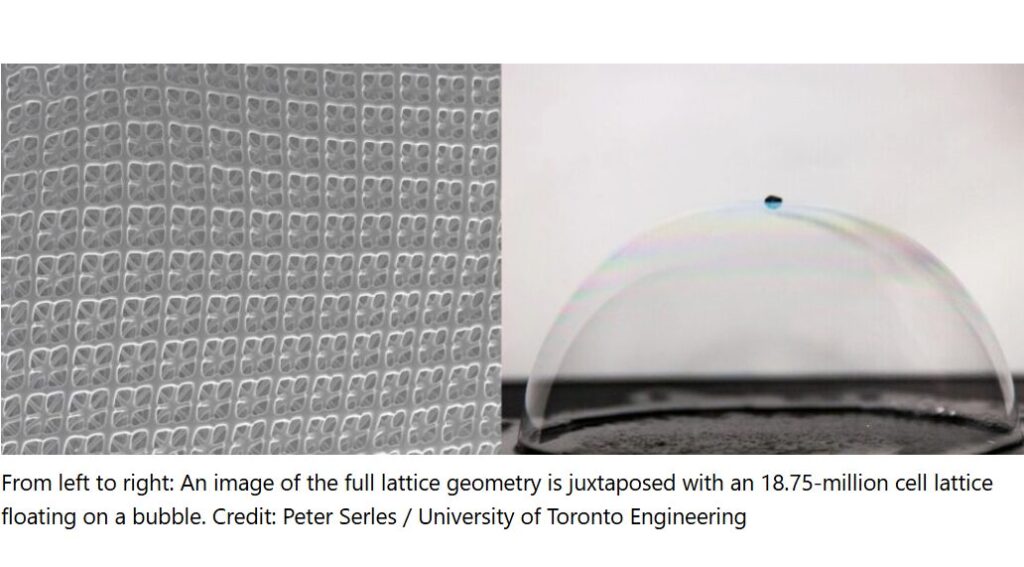
Researchers at the University of Toronto’s Faculty of Applied Science & Engineering have used machine learning to design nano-architected materials that have the strength of carbon steel but the lightness of Styrofoam.
In a new paper published in Advanced Materials, a team led by Professor Tobin Filleter describes how they made nanomaterials with properties that offer a conflicting combination of exceptional strength, light weight and customizability. The approach could benefit a wide range of industries, from automotive to aerospace.
“Nano-architected materials combine high performance shapes, like making a bridge out of triangles, at nanoscale sizes, which takes advantage of the ‘smaller is stronger’ effect, to achieve some of the highest strength-to-weight and stiffness-to-we...
Read More









Recent Comments